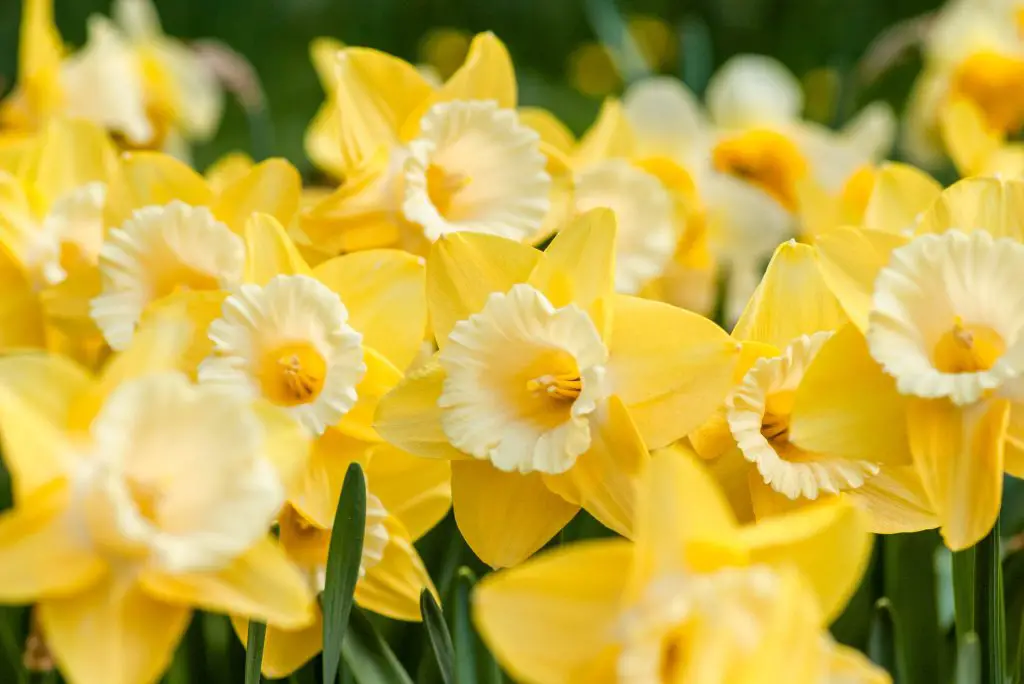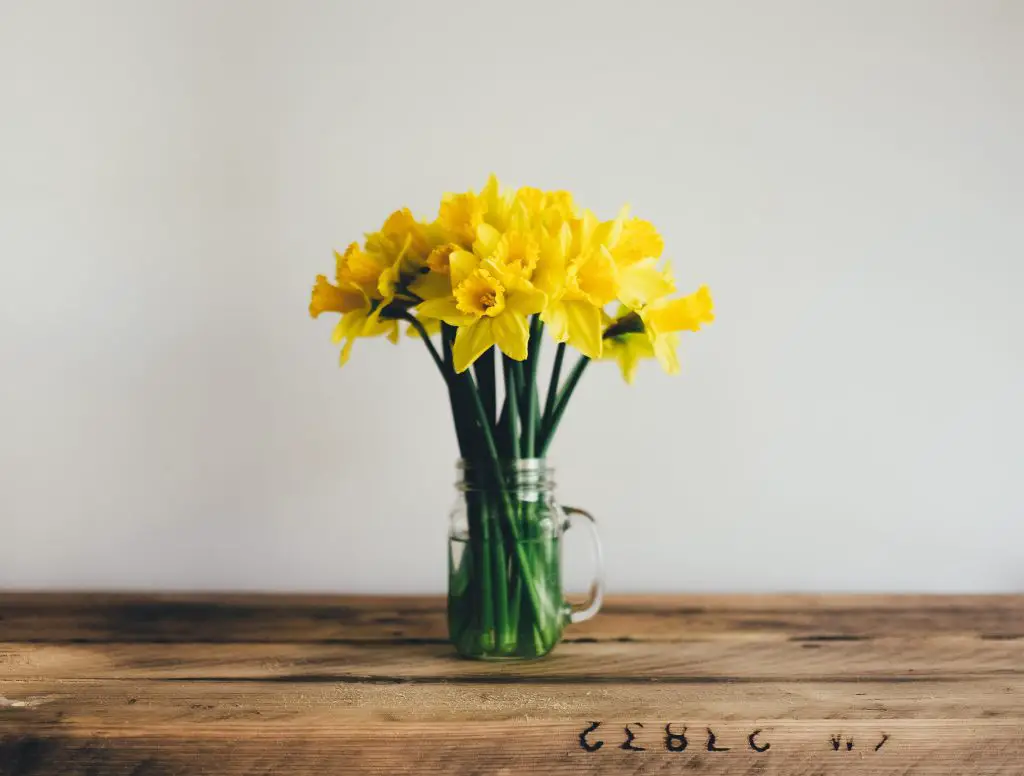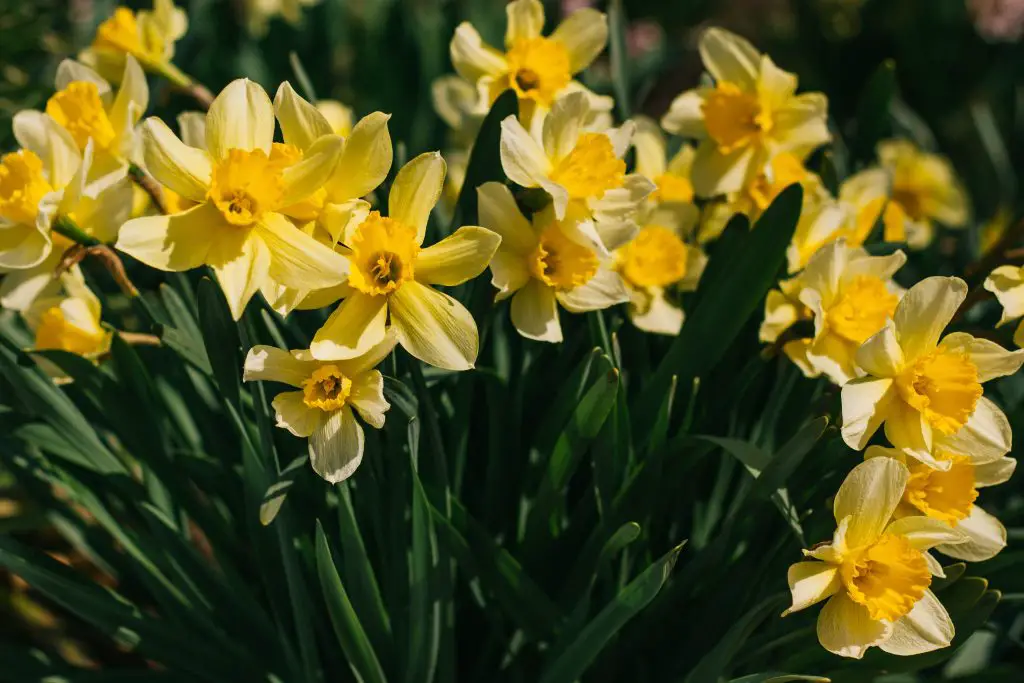Do Daffodils Spread? Daffodils are one of the earliest bulbs to appear in spring and produce a fantastic display that heralds the coming of better weather. They are commonly used in garden beds to give a splash of colour when other plants are only thinking about waking up for the warm weather. However, one of the common questions that is asked is do daffodils spread or will I stay in the same position?
Daffodils do not spread significantly from the position in which they are planted in and they will generally remain wherever they have been placed originally. The reason for this is that the most common way for bulbs to reproduce is by division which typically takes 3 to 5 years. However, they can also produce seeds which can create new bulbs as well.
However, as there is no significant mechanism to enable them to transfer the seed very far even if seed production does occur is quite likely that the Daffodils will remain in a similar location to where they once were.
To ensure that they continue to flower regularly every year you will pick need to dig them up after 3 to 5 years when they are ready for division. Generally, if you do not do this division what you will see is that the number of flowers will reduce over time, and eventually, the bulbs will only produce foliage and no flowers if they become too crowded.

How To Divide Daffodils
To divide daffodils is quite a straightforward process with the main risk being that the bulb are damaged in the process of removing them from the soil. As a result of this, it is a good idea to move the bulbs after flowering has finished as the foliage is dying back and turning brown.
The reason for this is that you can clearly see where the bulbs are located below the ground at this point, however, if you are not able to remove the bulbs at this point in time it is advisable to place a stake in the position where the bulbs are so that you can locate them later. If you are considering moving the bulbs the latest that you could do it is the start of winter.
To avoid damaging the bulbs in the removal process starts by digging a circle about half a foot away from where the bulbs are expected to be found and gently lift them up to ensure that you do not damaged them when they removed.
Once they are out of the ground remove any excess soil so that you can complete the division. Split the bulbs by prying them apart using your hands as using a knife or secateurs is likely to damage them.
At this point, the bulbs can either be replanted directly back into the ground or they can be stored until later in the season. However, it is important to recognize that daffodils need a period of cold in order to flower so if you decide to store the bulbs they should be stored in a cool place if you live in a cold climate or if you live somewhere that is warmer they should be stored in the fridge in a paper bag.
This process will trick the bulbs into thinking that they’ve had a winter even if they haven’t. If you are replanting them at a later on about the latest you can do it is midwinter any later in the season will effect the flowering.

Tips For Planting Bulbs
Whether you plant bulbs immediately into the ground after they have a divided or wait a little bit there are a few little tricks that can help your plantings to look fantastic in the following year.
The first tip that is recommended by gardeners world’s host Monty Don is to throw the bulbs onto the ground and plant them where they land. This will provide an arrangement that appears to be natural rather than having them in a precise geometric pattern.
When planting the bulbs they should be placed at a depth of approximately 2 to 3 inches this can be done by using a bulb planter or simply using a trowel. However, if you’re planting heaps and heaps of bulbs it is advisable to purchase a bulb planter as it will save your back. There are models that are designed to make your life a whole lot easier because the holes are created by standing on a lever on the side of the bulb planter which means there is less effort per bulb. To see the latest price on Amazon click on the link here.
The other tip that we recommend if you are planting in pots is to combine different types of bulbs that flower at different times to create a succession of flowers that can run from early spring all the way through to the end of spring.
To create this effect start by selecting bulbs that flower at different times if you are unsure about this visit our article Can You Plant Bulbs In Spring? which has an extensive list of the bulbs are available and when they flower.
When filling up the pots start by placing a layer of soil on the bottom and then plant the first layer of bulbs then put in another layer of soil and put the next layer of bulbs above and you can even put a third layer on as well.
You may be concerned about the fact that you have bulbs on top of each other, however, what will happen is that the plants at the lower levels will produce stalks which grow around the bulbs above and eventually make it to the surface to create your display.

What To Do After The Bulbs Have Flower
All bulbs whether they are daffodils or not will produce foliage followed by a flower within the growing season. Once the flower fades the important thing to do is to ensure that you do not touch the foliage and allow it to die back naturally as this is an important part of the life cycle of the bulb.
The foliage produced sugars while it is above ground which is fed into the bulb below the ground. These sugars are important as they will allow the bulb to have sufficient energy to flower the following year. If you cut the foliage off too early you will reduce the amount of sugar available potentially risk having bulbs that do not flower the following year.
However, the foliage can be removed once it begins to brown as that is typically when photosynthesis has ceased and there’s no longer much value in leaving the foliage there. If you follow these simple steps you will end up with flowers for years to come and hopefully a progressively larger stock of daffodil bulbs within your garden.
I hope you found this article useful and have great success with your daffodils, if you have any additional questions please leave them in the section below.
Relevant Articles
Can You Plant Bulbs In Spring?
Is It Too Late To Plant Gladiolus Bulbs?
Do Tulips Bloom More Than Once in the Same Season?
What To Do With Tulips After They Bloom?
